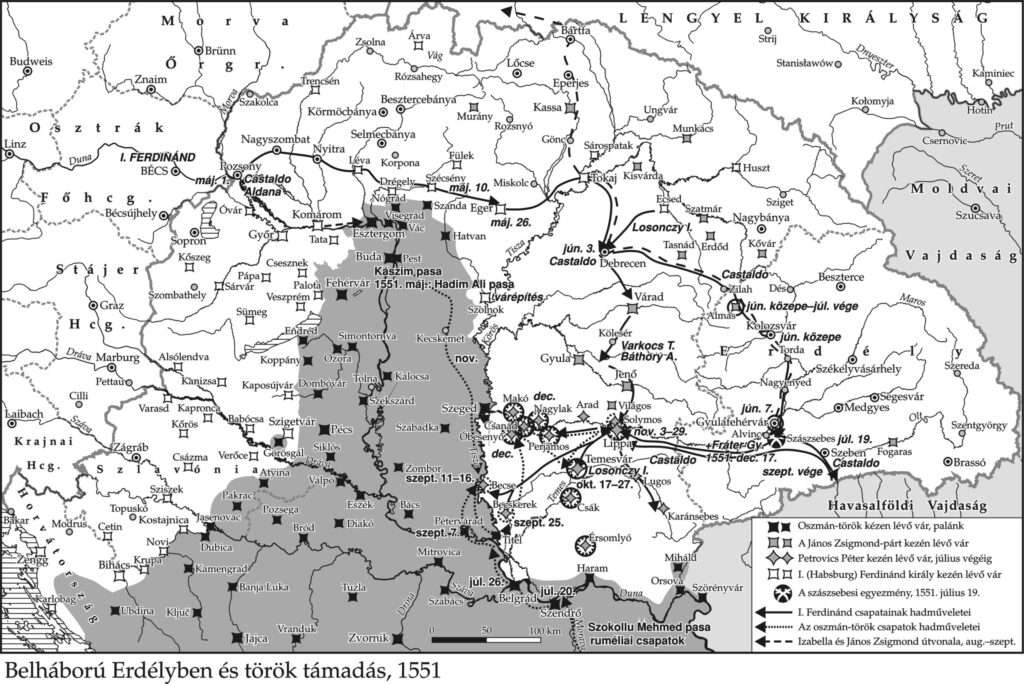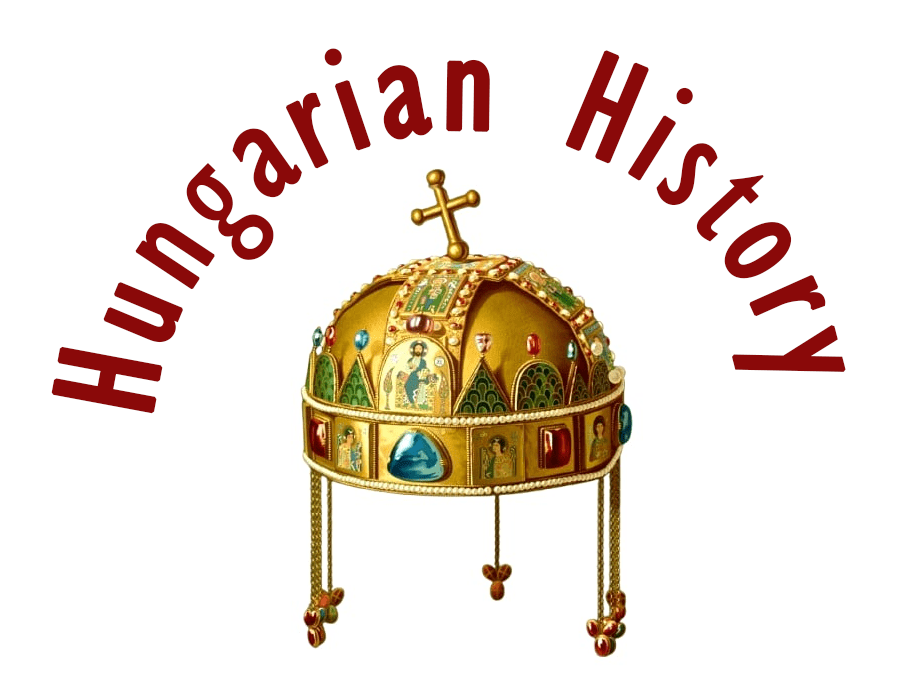Isabella Jagiellon (Polish: Izabela Jagiellonka; born in Kraków, Kingdom of Poland, January 18, 1519 – died in Gyulafehérvár (Alba Iulia), Eastern Hungarian Kingdom, September 15, 1559)

Izabella was a Polish royal princess from the Jagiellon dynasty, the eldest child of King Sigismund I of Poland and Queen Bona Sforza. Through her marriage to Szapolyai János, King of Hungary, in 1539, she became Queen Consort of Hungary until he died in 1540.
From her brief marriage, she bore one son, Szapolyai János. Following the Ottoman Sultan Suleiman I’s conquest of Buda in 1541, Izabella was entrusted with governing the eastern territories of Hungary on behalf of her son. Initially, she governed with the assistance of Brother Martinuzzi György, the “White Monk”. However, in 1549, Martinuzzi allied with Ferdinand I of the Habsburg dynasty, pressuring Izabella and her son to relinquish power. They sought refuge in Poland but returned to the country in 1556 after Ferdinand proved incapable of defending the eastern territories from the Ottomans, and the Transylvanian Diet invited them back.

During Izabella’s rule, a Renaissance court of educated individuals flourished in the palace of Gyulafehérvár. She was a supporter of religious freedom and fluent in four languages: Polish, Latin, German, and Italian. In 1558, a group of nobles, led by Bebek Ferenc and Kendi Ferenc, rebelled against her, but Izabella brutally suppressed the revolt with the help of Balassa Menyhért. She died in 1559 and was laid to rest in the Cathedral of St. Michael in Gyulafehérvár, where her tomb remains today.

Isabella was born in 1519 as the daughter of King Sigismund (the Elder) of Poland and Princess Bona Sforza of Milan. She was the eldest of five siblings. From her father’s previous two marriages, she also had an older brother and three half-sisters. Isabella was raised in the Polish royal court in the spirit of Renaissance rulers.
In January 1539, a Hungarian delegation from Kraków formally requested her hand in marriage for King Szapolyai János of Hungary. Isabella did not object to the political marriage and accepted the decision to marry a king more than three decades her senior with resignation. At that time, Szapolyai was still a tall and handsome man, in addition to being educated, decisive, and courteous. During peace negotiations in Várad in November 1537, a letter arrived from Jan Tarnowski, the castellan of Kraków and a supporter of King János, proposing the marriage.

According to Paolo Giovio, King János, who was 52 years old and in poor health, was initially reluctant to remarry. However, Brother György’s persuasion proved effective. Bethlen Farkas also wrote about this, stating:
“Since he was at the turning point of manhood, already in his 52nd year, and because his fragile health often tested him, he dreaded marriage. However, the eminent advisors of Pannonia urged him to abandon his bachelorhood and marry, so that through a noble union, a lovable heir might be born, adding new splendor to the Kingdom of Pannonia with this most precious jewel of blood. Moreover, the childlessness threatening the extinction of the Szapolyai lineage—especially since his elder brother had also died without an heir at Mohács—could be remedied, reviving the ancient name of his house. […] Thus, they convinced him to seek the hand of the daughter of Sigismund I, King of Poland, in marriage, for the sake of peace after so many exhausting struggles and trials endured at the hands of fortune.”

On January 31, 1539, a symbolic wedding ceremony was held in the throne hall of the Kraków palace. The Polish royal vice-chancellor, Samuel Maciejowski, delivered a ceremonial speech on behalf of the king. The royal decree formalizing the marriage was also drafted by the vice-chancellor. A small excerpt from the decree highlights the essence of the dynastic alliance:
“His Most Sacred Royal Majesty is convinced that this new bond of friendship will not only unite both royal families but also bind the neighboring countries, Hungary and Poland, with much stronger and nearly steel-hard ties.”
In early February, Isabella set out for Hungary, accompanied by Perényi Péter, Homonnai Drugeth István, and Brodarics István, the Bishop of Vác. Traveling through Eperjes, Kassa, Mezőkövesd, and Hatvan, they reached Csepel Island on February 19. There, King János personally received her. From Csepel, they traveled to Buda, where they spent a few days resting.

The wedding and coronation took place in Székesfehérvár on March 2, 1539, followed by the wedding feast in Buda. The ceremonies were conducted with all the grandeur befitting a royal marriage. The elderly Archbishop Várdai Pál of Esztergom officiated the wedding and coronation, likely with the consent of Ferdinand.
Main points of the marriage contract between Szapolyai János and Jagelló Izabella:
-King Sigismund gives his daughter a dowry of 70,000 Hungarian gold florins, to which King János adds twice as much as a tribute, i.e. he is bound in estates, castles, and manors.
(The manors were the following: the castles and manors of Solymos, Lippa, Déva, Csicsó, Kis-Küküllővár, half of the revenues of the castles of Tokaj, Tállya, and Regéc, the town of Debrecen and the thirty-third tax of the castle of Kassa.)

-If King János dies first and Isabella remarries, she will receive her dowry back in cash.
-(If this should fail, King János would be obliged to send the tribute to King Sigismund in Kraków, or to deposit it in Venice or in a Fugger bank, until Isabella’s tribute was legally secured to him.)
-In return, the King of Poland shall also send the arrears of his daughter’s dowry within two (or three) months.
-The King of Poland and his wife declared that it was out of extreme affection for their daughter that they gave such a large dowry (32,000 forints in cash, the rest in jewels, pearls, and ornaments).
-The Hungarian ambassadors, under the penalty of 140,000 gold florins, guaranteed that their lord would fulfill the conditions.
Finally, Isabella would receive a gift of 2000 forints a year from the Saxons’ St Martin’s Day tax.

A short marriage
She and her husband spent very little time together, but as soon as the marriage was consummated, Izabella became pregnant by Szapolyai. Although he had no hope of having a child, he had not even been informed of his son’s birth when he had a sudden stroke and was already dying. However, according to other sources, he fell ill upon receiving the news.
He immediately terminated the treaty with Habsburg Ferdinand that left him the Hungarian throne and instead appointed his son as his successor. (It can be proof that he had to be informed about the birth of his son.) He even ordered his followers to place their trust exclusively in the Ottoman Empire, whom they should support in the fight against Austria. You can read more about the life of Szapolyai János here: https://www.hungarianottomanwars.com/famous-people/king-szapolyai-janos-1487-1540/

Queen Isabella became the governor of the country in 1540, after the death of King János, the guardian of her son, the infant János Zsigmond, became Brother György, Petrovics Péter and Török Bálint. She found herself in a difficult situation, writing a series of letters to both her mother and father, not knowing what to do in a foreign country, a newly widowed woman, at the mercy of the political games of unknown lords.

An interesting addition to the life of the queen is a letter written from Buda by her secretary Piotr Porembski to Queen Bona, Isabella’s mother, stating that Isabella was being held prisoner in Buda and that many lords ( Bebek Ferenc, Perényi Péter, the Balassa family) were drawn to the Habsburgs, so they intercepted messages from Poland and questioned the servants. She asked Bona to do something for her daughter.
Since King János had broken the Peace of Várad in 1539, a year before his death, Habsburg Ferdinand sent an army of 30,000 German, Italian, and Bohemian mercenaries, led by Roggendorf, and Hungarians to take Buda in May 1541. The siege of the city was led by Roggendorf, while the defense was led by Brother György, who asked the Turks for help. However, Sultan Suleiman, who rushed to Buda’s rescue, did not intervene as the invaders fled. On 29 August, Suleiman I conquered Buda by trickery, and for 10,000 gold florins a year he entrusted the government of Transylvania, the Trans-Tisza Region, and the Teme River Region to Queen Isabella, the legal guardian of King János Zsigmond.

A well-known story from this time has survived, when, in front of the Sultan’s envoy, who doubted that the baby was the Queen’s child, Isabella, in an unexpected gesture, uncovered her bosom and breastfed the child on the spot. The sultan’s officer looked away in confusion. According to another surviving story, when Sultan Suleiman invited the Hungarian lords to his camp at Óbuda, Izabella and the infant János Zsigmond were invited by the Sultan, but the Queen shouted back to the Sultan: it was not fitting for a widow to enter the tent of a stranger. She hoped to save her child from danger, but as we know, this was not the case: the infant king had to be taken to the Turkish camp by a nurse.
However, there is more to it: read the details of Buda’s fall on my page, and judge the role of Isabella in it: https://www.hungarianottomanwars.com/dramatized-historical-writings/suleiman-before-buda/

After the Hungarian royal court had to leave Buda, Queen Isabella settled in Lippa briefly, from the spring of 1542 until the summer of 1551 in the former bishop’s palace in Gyulafehervár. This decade was a period of unceasing hostilities and fierce disputes with the governor, Brother György. The “White Monk” considered the widowed queen to be capricious, frivolous, unreliable, and unfit to rule, and he was quite correct. Most of their quarrels were over the palace and the queen’s personal ‘budget’, as Isabella wanted to raise money to furnish her usual court in Krakow or Buda, but he was not interested in these areas of life. In 1549, he conducted the negotiations leading to the Treaty of Nyírbátor in the queen’s name but without her knowledge, and then forced her at gunpoint to sign her resignation and hand over control of Transylvania to Habsburg Ferdinand.

But the queen was now behaving like a real adult, finding it increasingly difficult to tolerate the constant tutelage of the White Monk, and thinking more and more about the affairs of the country and her son, King János Zsigmond the Elected King. She wanted to secure her rule over Transylvania with the help of the Turkish Porte, but in 1551 she was forced to abdicate in favor of Ferdinand by Brother György, who was trying to unite the divided country. Together with his son, Queen Isabella, left for Kassa and then Poland. On 21 July 1551, she presented the Holy Crown and the coronation insignia to the Imperial General Castaldo, who accompanied her from Gyulafehérvár to Kolozsvár. Castaldo sent the crown and the badges to King Ferdinand with strong military cover.
You can read more about Brother György here:
https://www.hungarianottomanwars.com/essays/frater-gyorgy-utisinovic-martinuzzi-gyorgy-1482-1551/

Transylvania came under the rule of King Habsburg Ferdinand, but Ferdinand had the White Monk, already a Cardinal, assassinated at the end of 1551. It is no coincidence that when the news of Brother György’s death reached her in exile in Poland, she received it with furious gloating. During the years of forced exile in Poland (1551-1556), she tried to raise her son as heir to the throne, a king exiled from his country, but who must regain his rightful property. She continued to make every effort to marry off his son, first in 1551 to obtain for him Ferdinand’s youngest daughter, the four-year-old Archduchess Johanna, and then a French royal princess, but without success.

Ferdinand’s troops sent to Transylvania proved insufficient to defend the part of the country, so the Transylvanian nobility, dissatisfied with Habsburg rule and fearful of Turkish revenge, called back Queen Isabella in 1556. She solemnly marched to Kolozsvár on 22 October and, by decision of the Diet of Kolozsvár on 25 November, resumed rule as governor of Transylvania in her son’s name. The separation of Transylvania from Hungary, under Turkish patronage, became final.

When Queen Isabella returned, her heyday had arrived, now “freed” from the White Monk. She took over the government, including the administration of the finances. During her reign, she established a veritable court for herself. Italian tapestries and furniture finally decorated the palace in Gyulafehervár, where she moved back with her son, and in this and other matters, she did not allow her decisions to be controlled or overruled. She was also able to acquire a large quantity of jewelry, of which his opal-encrusted mantelpiece is now kept in the Hungarian National Museum.

Although female monarchs were rare in that era, she became a determined, purposeful monarch. The Transylvanian lords, however, soon grew tired of her unlimited power and in 1558 organized a rebellion against her, to recognize her son as her co-ruler, hoping to exert more influence over the “more manageable” János Zsigmond. Isabella was accused of associating herself with foreign (mainly Polish and Italian) courtiers and minions, and of giving them material goods and positions.

At the head of the uprising were the chief captain Bebek Ferenc and Kendi Ferenc, the Transylvanian Voivode appointed by Ferdinand, and his brother Kendi Antal. On 31 August 1558, at the end of a banquet, the queen had them brutally murdered by her Polish courtiers. The assassination was organized by Balassa Menyhért. To justify her deed, she called a Diet, where she presented the documents of treason on 29 September. She used these documents to prove that Bebek and Kendi had tried to murder her and her son with poison brought from Istanbul. She ordered the confiscation of the vast property of the executed men for the benefit of the treasury.

She spoke four languages, liked pomp, and surrounded herself with foreigners – mainly Poles and Italians – and had a Polish lover in the person of Sanislo Nisovszki. She gave much to courtly representation. She died on 15 September 1559 at the age of 40, allegedly as a result of a miscarriage. She was buried in the cathedral of St. Stephen’s Cathedral in Gyulafehérvár, and her tomb has been preserved.

In his memoirs, Bishop Forgách Ferenc of Várad recorded that tradition has it that before her exile in Poland, the Queen when she stopped to rest at the Meszesi Gate, carved the abbreviation of her motto into the bark of an old oak tree:
“SFV – Sic fata volunt”, meaning “Fate willed it so”.

Dear Readers, I can only make this content available through small donations or by selling my books or T-shirts:
Please, support me with a coffee here: https://www.buymeacoffee.com/duhoxoxa
You can check out my books on Amazon or Draft2Digital, they are available in hardcover, paperback, or ebook:
https://www.amazon.com/dp/198020490X or at https://books2read.com/b/boYd81

My work can also be followed and supported on Patreon: Become a Patron!http://Become a Patron!
Become a Patron! and donations can be sent by PayPal, too: https://tinyurl.com/yknsvbk7


https://hungarianottomanwars.myspreadshop.com/all
Subscribe to my newsletter here: https://tinyurl.com/4jdjbfkn

